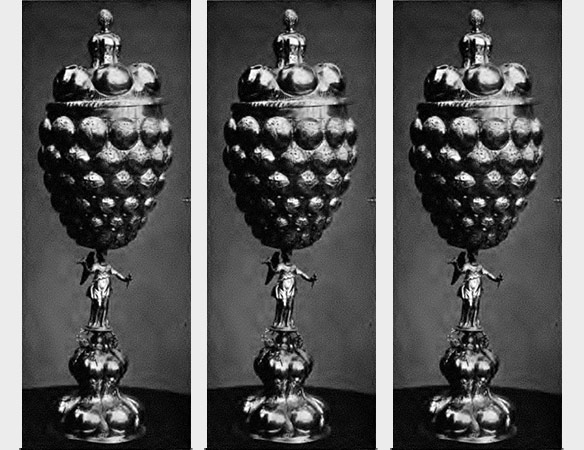<![CDATA[The Lycurgus Cup is a 4th Century artifact that had puzzled scientists for years. This is because it reflects two different colors depending on the angle light shines on it: jade green when lit from the front, and blood red when lit from behind. It wasn't until decades later after its discovery when scientists discovered its secret. This cup is a "cage cup", or "diatretum", meaning the glass used to make the cup was intricately cut to produce a decorative "cage" at the surface-level. These cage decorations could depict anything, whether it be a war, or a god, or a hero. Most have geometric abstract designs or a lattice of linked circles. These cups date back to the fourth century A.D., and represent some of the most advanced and technically sophisticated glass objects ever made. The Lycurgus Cup is thought to be around 1600 years old, and was only used for special occasions. This cup depicts King Lycurgus, a legendary character from Homer's Iliad, and the design of the cup shows the triumph of Dionysus over Lycurgus. Lycurgus is bound by a vine and is naked, apart from his feet, and on the left is a smaller version of Ambrosia. Behind Ambrosia is one of Dionysus's satyrs in human form, standing on one foot with one rock in hand prepared to be hurled at Dionysus. The artwork is impressive, but it isn't that that has impressed scholars the most. This cup is able to reflect two colors depending on where the light shines. It baffled scientists for a duration of about 40 years afer the cup was acquired by the British Museum from Lord Rothschild in the 1950s. Then in 1990, the mystery was solved when researchers in England analyzed broken fragments under a microscope and found that the ancient Romans knew a thing or two about nanotechnology. The dichromatic effect was accomplished by mixing the glass with extremely tiny particles of gold and silver. The gold, however, was few in its quantity and some researchers stipulate that the glassmakers may not have know that there was gold in the silver dust that they were using. Some however, say that they knew what they were doing, as only this exact mixture could have produced such a result. The exact process of making this glass is still unclear to scientists, but these dust particles were ground into very tiny particles of about 50 nanometers in diameter, which is less than a thousandth of the size of a grain of salt. Researchers in England solved the mystery of the cups by creating miniature Lycurgus Cups of their own, and spraying them with gold or silver nanoparticles. They did tests with water, oil, sugar and salt solutions. When they were poured into these miniature cups, they found that each solution would give off its own color - green for water, red for oil, etc. Researchers are now using these findings for research in the medical field, to help make better devices for testing saliva and urine in pathogen detection. ]]>
Roman Goblet Shows Ancient Knowledge of Nanotechnology
